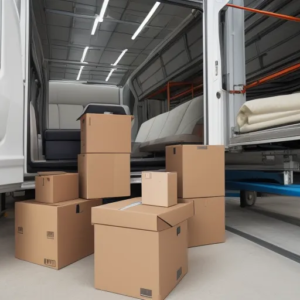When you need to transport a vehicle, understanding the differences between using open and enclosed auto movers helps you make the right choice. Both options have their pros and cons depending on your specific needs when transporting cars. Here are seven differences between open and enclosed auto transport for moving vehicles long distances:
1. Weather Coverage
Vehicles on open trailers face all kinds of weather exposure. Sudden rainstorms, sleet, or snow can occur while your car is in transit. If you don’t mind a wet auto exterior and increased chances of flying debris, open carriers can deliver your vehicle. If avoiding vehicle damage factors into your decision, weigh open transport against enclosed options.
2. Loading and Unloading
Drivable vehicles move onto open auto movers trailers for quick loading without the need for special equipment. Once at the destination, the vehicles are ready to be driven off the ramps or platform. This efficiency appeals to vehicle owners in a time crunch. Enclosed trailers may need more time to secure, load, and unload vehicles using specialized equipment.
3. Large Vehicle Transport
Some enclosed moving vehicles are big enough to transport specialty, oversized, and exotic cars. Moving luxury sports cars, classic cars, and motorcycles in an enclosed carrier protect them from potential damage. Trailers sized for wide vehicles with low ground clearance help owners avoid damage when loading. Special vehicles needing extra room for tall tires, side doors, or other custom features are best suited for enclosed transport.
4. Straps and Tie-downs
Inside enclosed trailers, vehicle haulers use floor-mounted straps and wheel chocks to secure vehicles. This stable transport position, coupled with blocked shocks, prevents movement that causes vehicle swaying, shifting loads, and accidental impacts. Open car transport options cannot secure vehicles as much, increasing jostling that may damage bumpers or paint.
5. Debris Protection
Enclosed auto transport features trailers with hard exteriors to shield vehicle contents from poor weather conditions on the route. The enclosed trailers prevent vehicles from being hit with road rocks, bugs, or tar during highway trips. This built-in protection keeps vehicles in pristine condition when delivered. Owners of high-value cars may choose enclosed transport. Antique vehicle collectors may also prefer enclosed trailers as they minimize exposure.
6. Ramps and Liftgates
Enclosed vehicle drivers use custom trailer liftgate loading systems. These offer gentle incline slopes for driving low-clearance vehicles aboard without scraping their undersides. Open trailers often lack liftgates, increasing challenges for loading high-end cars. Liftgates raise and lower vehicles quickly and safely.
7. Privacy and Theft
With enclosed trailers, vehicles stay out of sight while on the road. This removes worries about public notice, individuals attempting access or entry, or theft when unattended. Open trailers leave vehicles visibly mounted, providing less privacy than an enclosed shipping solution.
Contact Reliable Auto Movers Today
When planning vehicle shipping, evaluate the pros and cons of open versus closed transport to make the right decision for your needs. Auto movers enhance the safekeeping and seamless delivery of your vehicles by driving carefully and utilizing safety features like straps and ramps. Hire a reputable auto-delivery service today.




